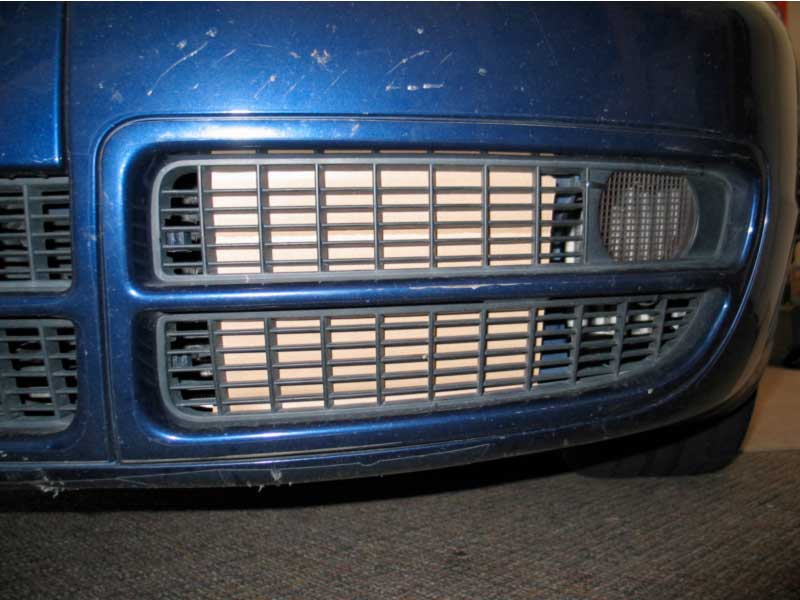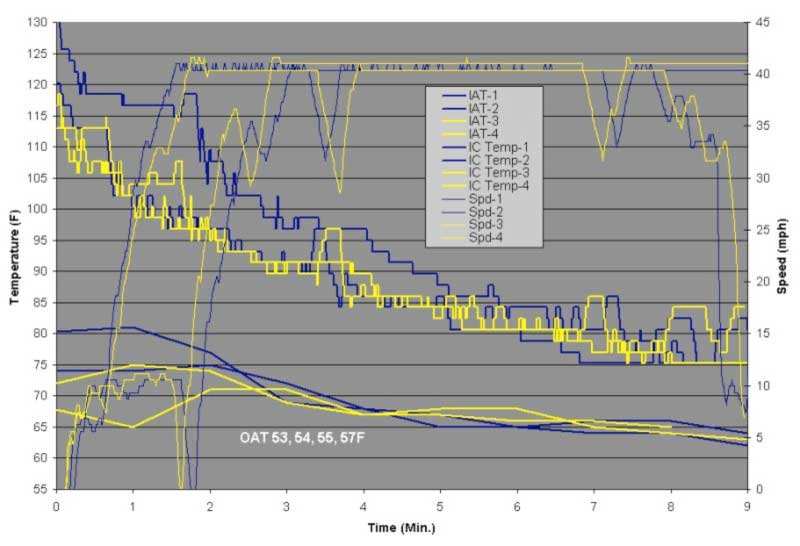Objective: Determine what affect the intercooler shroud has on the capacity for the AWE intercooler to transfer heat from the intake air.
Procedures: Drive the car over a planned course at a set speed and record intake air temperature and intercooler temperature.
Configuration: A flat piece of cardboard will be cut to fit behind the lower grill covering the area of the intercooler shroud that extends out past the intercooler face. The car will be driven for thirty minutes prior to the test to allow the engine compartment to rise to normal operating temperature. The car will be shut off for 5-10 minutes to allow the intercooler to heat up.
Constraints: Two test runs will be conducted in each configuration. All tests will be conducted at the same speed. All tests will be conducted at the same ambient air temperature. Blocking of the intercooler shroud will be done by only the piece of cardboard.
Results: Shown below is a chart of the results. The intake air temperature starts around 110F to 130F and drops to 75-85F by the end of the test. The IC face starts between 67-80F and ends around 62-64F. Vehicle speed is shown for an out and back test. Each leg, out and then back, was a separate test. This is reflected in the different rates of acceleration.
Conclusion: There does not appear to be any difference in that ability of the intercooler to cool the intake air charge based upon the amount of shroud area exposed. This is an unexpected result given the physics of heat transfer from an intercooler.



